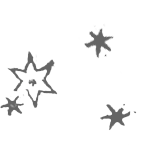Highlights
Citation
Item Location
Adams’ work remained in publication for decades helping generations of microscopists and hobbyists explore the unseen world.
In this augmented edition, Figure 1 illustrates the mouth parts of the barnacle as seen through the microscope, with Figure 2 portraying them in actual size. Adams, describing the peculiar mouth parts as “arms” or “horns,” cites previous investigations of their rotary motion. The function of barnacle mouth parts, adapted from legs, would continue to occupy naturalists until Charles Darwin scrutinized barnacles to test his emerging theory of descent with modification by natural selection. Darwin’s eight-year study culminated in the publication of two volumes on barnacles in 1851 and 1854.
Figure 3 illustrates the proboscis of the bee, with Figure 4 portraying it in actual size. Adams explained that the proboscis or trunk is “employed by the animal to collect the honey, which we appropriate for ourselves as if it were made for us.” Adams and his readers would see for themselves structures of the bee described nearly two centuries before by Galileo and the Academy of the Lynx, and reported in the largely forgotten Apiarium.
By the end of the 18th century, an evening at the microscope in a family or educational setting offered more than mere entertainment and idle curiosity. To legitimize widespread engagement in microscopy as a moral occupation, Adams promoted the microscope as an instrument of natural theology, evoking Jan Swammerdam’s wonderment at the intricate complexity of the bee. An ode to the bee, quoted in nearly an entire page by Adams, alluded to how the bee produces honey when “the vital warmth concocts th’ ambrosial tide.”
Related Items
Resource Type: Book





